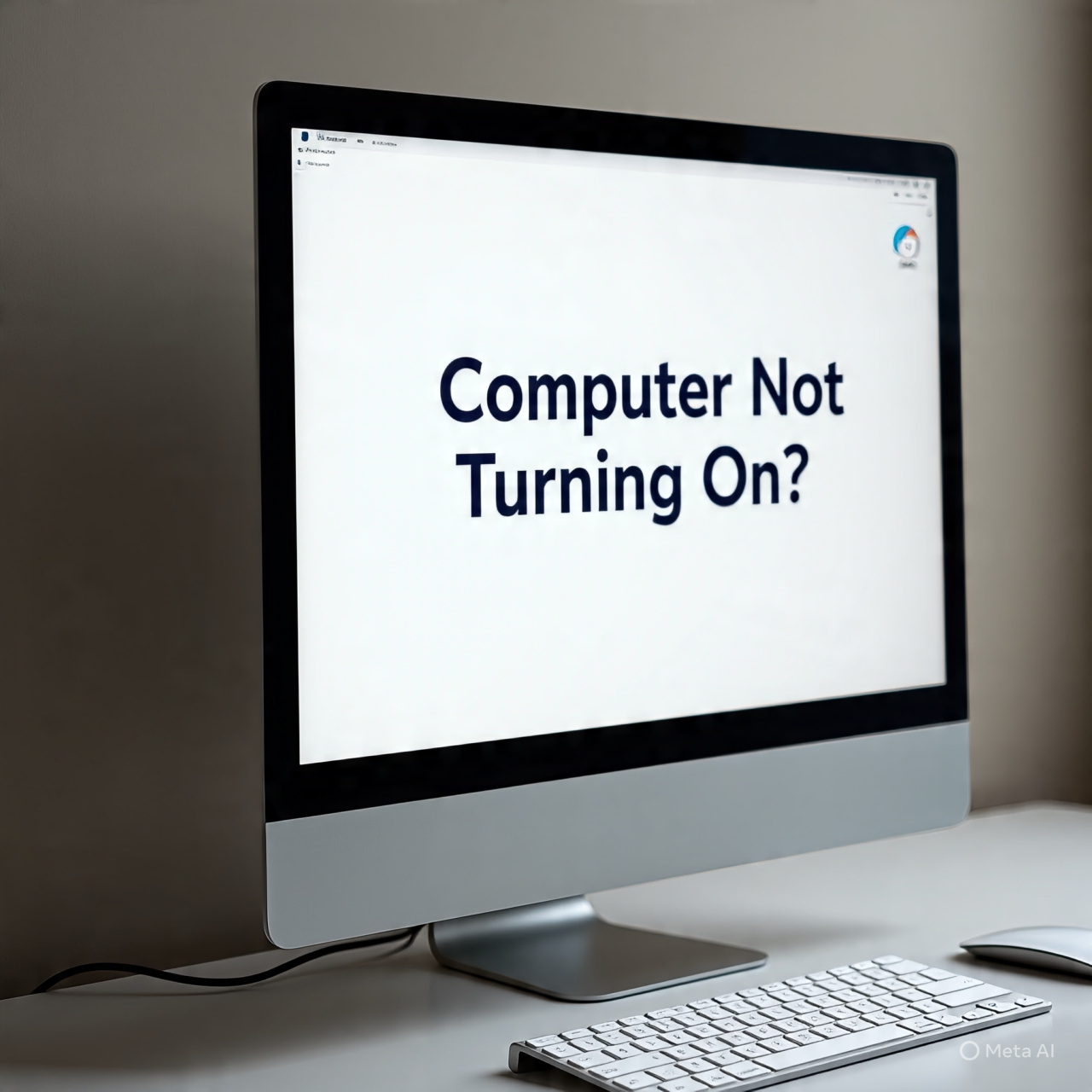
Computer Not Turning On? 7 Fixes You Can Try at Home (2025 Guide)
Your desktop PC or laptop won’t power on — no display, no fan spin, maybe just a tiny LED… frustrating, right? Don’t panic. In this 2025 step-by-step guide, we’ll walk you through the most common causes and 7 practical fixes you can do safely at home before visiting a service center.
In this guide you’ll learn:
- The most common reasons a computer won’t turn on
- Seven simple, safe fixes (with clear steps)
- How to avoid this problem in the future
📲 WhatsApp Now for Instant Help
Why a Computer Won’t Turn On (Most Common Reasons)
- Power delivery issues: Loose power cable, faulty power strip, or dead wall socket
- Battery or charger failure (laptops): Drained battery or damaged adapter
- Peripheral or short-circuit conflicts: USB device or add-on causing a fault
- RAM or storage seating issues: Loose RAM/SSD/HDD after a bump or move
- Overheating & protection: PC previously overheated; PSU/motherboard safety lockout
- Faulty power button/PSU: Worn switch or failed power supply
Computer Not Turning On? Try These 7 Fixes
1) Check Power Source & Cables
Make sure the outlet is working. Plug another device (like a phone charger) to test it. For desktops, confirm the PSU switch
at the back is set to “|” (ON). Try a different power cable or power strip.
Laptop: Inspect the charger brick, cable, and connector. If the charging LED doesn’t glow, try another compatible adapter if possible.
2) Remove All External Devices
Disconnect everything: USB drives, printers, HDMI devices, hubs. A faulty peripheral can prevent power-on.
Try booting with only keyboard, mouse, and monitor attached (desktop) — or nothing (laptop).
3) Perform a Power Drain (Hard Reset)
Laptop: Unplug charger → Hold the power button for 15–20 seconds → Release → Plug in and try again.
Desktop: Switch off PSU and unplug → Hold power button for 15–20 seconds → Reconnect and try again.
This clears residual charge and often resolves “no power/no POST” issues.
4) Check the Display & Brightness (It Might Be On!)
Many “won’t turn on” cases are actually display issues. For laptops, increase brightness and try toggling the display output
(Fn + display key, often F4/F8). For desktops, ensure the monitor is on the correct input (HDMI/DP) and the cable is firmly seated.
5) Reseat RAM & Storage (Advanced but Safe If You’re Careful)
Power off and unplug first. Open the case/back panel. Remove the RAM sticks carefully and insert them again until they click.
Do the same for the SSD/HDD connectors. A loose module can completely block startup.
Tip: If you have two RAM sticks, try booting with just one at a time to isolate a faulty module.
6) Try a Different Power Adapter or PSU
Laptops: If a second compatible charger works, your adapter is likely faulty.
Desktops: If the PSU fan doesn’t spin and there’s no sign of power, the power supply may have failed.
Replacing a PSU is best done by a professional unless you’re confident with PC building.
7) Reset BIOS/CMOS (If It Was Recently Updated/Changed)
Incorrect BIOS settings or a failed update can stop boot. For desktops, power off, unplug, and remove the CMOS battery for
5 minutes (or use the motherboard CLR_CMOS jumper), then try again. For laptops, some models have a tiny reset pinhole.
💬 Still Stuck? Chat with SGrow Experts
Preventive Tips (So This Doesn’t Happen Again)
- Use a quality surge protector or UPS to protect against power fluctuations
- Keep vents clean and ensure proper airflow to avoid thermal shutdowns
- Don’t move the PC/laptop while it’s running (can loosen RAM/storage)
- Update BIOS/drivers cautiously; avoid forced shutdowns during updates
- Service your PC every 6–12 months for cleaning and health checks
When to Seek Professional Help
If you hear clicking from the drive, smell burning, see visible liquid damage, or the system repeatedly shuts off
immediately after power-on, don’t keep trying — you risk further damage. Get a professional diagnosis.
Need fast, reliable support? Our team at SGrow Computer Solutions can diagnose and fix no-power issues, RAM/PSU failures,
display problems, and data recovery.
✅ Explore our services:
Laptop Repair •
Computer AMC •
Data Recovery
🚀 WhatsApp Now for Instant Computer Fix
FAQs (Frequently Asked Questions)
Q1: My PC has power (LEDs on) but no display. What should I do?
Ans: Check monitor input/cable, reseat RAM, and try booting with one RAM stick. Also test with onboard graphics if available.
Q2: My laptop shows a charging light but won’t turn on. Why?
Ans: Try a hard reset (power drain). If it still fails, the power button, motherboard, or battery may be faulty.
Q3: Can a dead CMOS battery stop a PC from turning on?
Ans: Rarely. It usually resets BIOS time/settings. But corrupted BIOS settings can block boot; a CMOS reset can help.
Q4: Is it safe to reseat RAM and SSD at home?
Ans: Yes, if you unplug power, discharge static (touch metal), and handle parts gently by the edges.
Q5: When should I replace the PSU?
Ans: If the fan never spins, there’s burning smell, or another known-good PSU works, replace it. Seek professional help if unsure.
